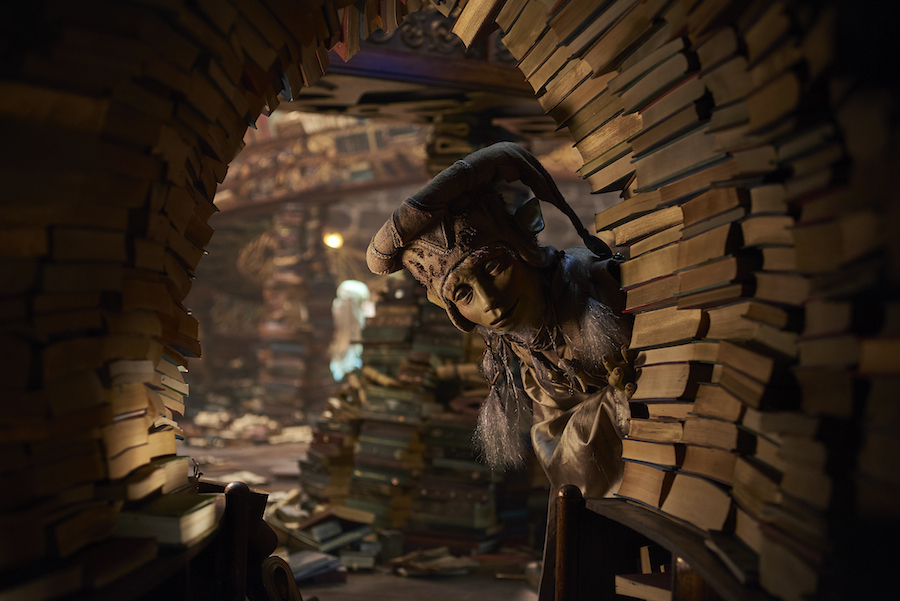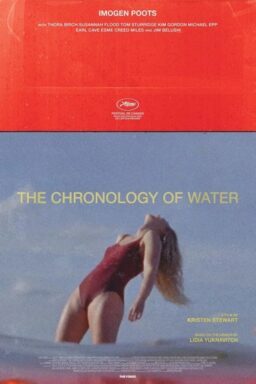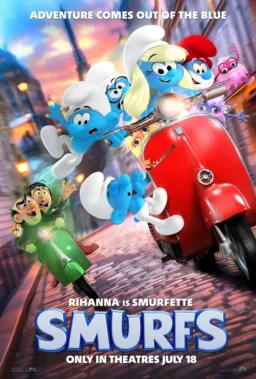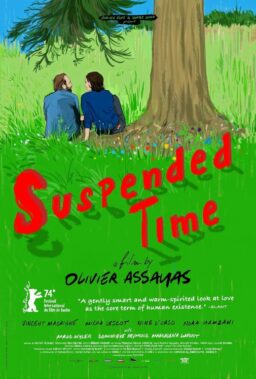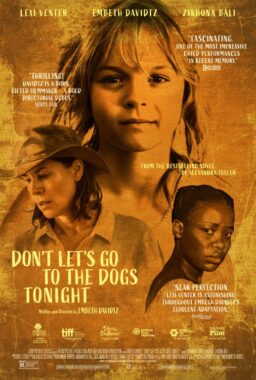There is a memorable exchange in Jim Henson’s 1982 film “The Dark Crystal” that poignantly encapsulates the spirituality of its creator. Aughra, a feisty earth mother amalgamating the diverse array of genders and species inhabiting the planet Thra, comes upon a creature in her net that she thought was long extinct. He’s Jen, one of the last remaining Gelfling, who was brought up and tutored by the wisest of the peace-loving Mystics. “Where is he?” Aughra asks, wheeling her head around to locate the young Gelfling’s beloved master. “He’s dead,” Jen sadly replies, to which Aughra—not missing a beat—shrugs, “Could be anywhere then … ” Though Henson died suddenly in 1990 at the mere age of 53, his spirit remains very much alive within every person fortunate enough to have collaborated with him, as well as the viewers whose lives were forever altered by his artistry.
Two years after their triumph with “Julie’s Greenroom,” a sublime children’s series championing arts education, Henson’s daughter Lisa has re-teamed with Netflix to create a ten-part series that serves as a prequel to her father’s most personal project. Though Henson was best known for his work on “Sesame Street” and “The Muppet Show,” the project closest to his heart was “The Dark Crystal,” an awe-inspiring, wildly audacious fantasy populated entirely by cutting-edge puppets. I saw it last year on a 70mm print and was blown away by the level of detail occupying every corner of the frame. Yet it was such a departure both in tone and content from Henson’s previous lighthearted offerings that audiences and critics alike didn’t know what to make of the film upon its initial release. It’s clear that Henson had desired to craft a classic with a sprawling scope on the order of “Star Wars,” and that dream has now been fulfilled by his daughter, who was a production assistant on the original film.
Executive-produced by Lisa Henson, “The Dark Crystal: Age of Resistance” is, quite simply, one of the all-time great fantasy epics, as well as the masterwork of puppetry most closely aligned with Jim Henson’s humanistic philosophy since his son Brian helmed 1992’s holiday perennial, “The Muppet Christmas Carol.” It’s only fitting that a fable illustrating the circular nature of life and death would turn the past into the future, as these episodes enable Henson’s 37-year-old film to serve as its grand finale. Though superior to the emotionally hollow “Star Wars” prequels in every sense, “Age of Resistance” does evoke “Rogue One” in how it builds suspense for viewers, even those familiar with the 1982 picture. Set many years prior to the events of Henson’s original story, the series takes us back to a time when the Gelfling population was abundant and prosperous, with female leaders guiding its seven kingdoms (the girl power on this show is off-the-charts). As in “Rogue One,” the tension lies not in the plot’s predetermined outcome, but in the fate of new characters whom we grow to care about deeply.

Three of them are Gelfling, each from a different tribe, who set out on separate quests that are destined to intersect. The warrior Rian (Neil Sterenberg) and soulful Deet (Beccy Henderson) bear a physical resemblance to Jen and Kira, the would-be Adam and Eve from Henson’s film, yet they emerge as wholly distinctive individuals in their own right. Brea (Alice Dinnean) is the youngest princess in the most revered of the Gelfling kingdoms, whose unslakable curiosity and penchant for burying her nose in library books has her poised for a life of defiance. What unites these disparate characters is their need to uncover the mysterious origin of the Skeksis, grotesque monsters who Aughra unwisely entrusted with Thra’s life force, the Crystal of Truth. Modeled by Henson after the Seven Deadly Sins and endowed with a ferocious appetite for power, the Skeksis harness the Crystal to drain Thra of its essence, triggering the emergence of a force known as “the Darkening” that has begun to enshroud the planet, causing all life to either decay or go mad. All the while, the Skeksis reign over the Gelfling, who blindly follow their overlords with misguided faith—that is, until the truth ignites the first sparks of resistance.
We only observed crumbling relics of the Gelfling kingdoms in the Henson film, when Kira sits in a throne once occupied by her female ancestors. With ten hours at their disposal, show runners Jeffrey Addiss and Will Matthews have ample time to not only flesh out the seven clans, but establish their hierarchy. Whereas Brea’s Vapra kingdom is the supreme leader, Deet’s underground community of Grottans are looked down on as the least of their species. This imbalance amongst the Gelfling mirrors the caustic division fueled by the Skeksis that has thrust Thra into chaos. Revolting against this darkness is the act of “dreamfasting,” where Gelfling touch hands to share one another’s experiences, an indelible metaphor for the empathetic power of cinema, as “two become one.” My favorite sequence in the film occurs when Jen and Kira dreamfast, their voices overlapping as their memories blur together, and there are plentiful instances of it throughout the series, as well as a few clever homages to Henson’s 1986 feature “Labyrinth” (note how the spider-like Arathim gather to form talking faces just like the corridor of “helping hands” that grab ahold of Jennifer Connelly).
Over 170 puppets were built by the Jim Henson Creature Shop for this series, and they are both marvels of craftsmanship and spellbindingly effective performers, as brought to life by a squadron of no less than 83 puppeteers. A few of them are Muppet legends, including Kevin Clash, who channels the wit of Frank Oz as Aughra; Louise Gold, the youngest puppeteer in “The Dark Crystal,” playing both Gelfling and Skeksis; and Dave Goelz, reprising his crowd-pleasing role as a pet Fizzgig fiercely devoted to his owner, though this time around, he has a name (Baffi) and an eyepatch that distinguishes him from the other fur balls, before delivering some of the finest moments in the finale. It was the enchantingly eerie illustrations of Brian Froud that served as Henson’s chief visual inspiration, and Froud has returned for the series, designing the characters and costumes along with his wife Wendy and son Toby (Connelly’s baby brother in “Labyrinth”).

The biggest hurdle regarding the Gelfling, originally sculpted by Wendy, is the limitation of their facial expressions, which could easily come off as wooden if placed in the wrong hands. It was Henson’s intention with the Gelfling to create a new form of puppet capable of giving subtle, human-scaled performances that contrasted with the Muppets, whose larger-than-life emoting is, at times, more evocative of animation. There are numerous moments in “Age of Resistance” where the Gelfling must exude operatic levels of despair and catharsis, complete with tears streaming down their faces, and the puppeteers are more than up to the challenge. As performed by Dinnean, Brea is the equal of any human actor, conveying multiple layers of nuance with every shift of her eyes and slight change in posture. Built for more fluid expressions are the Podlings, sentient beings with the face of a potato that hilariously contorts when blowing raspberries, as demonstrated by Deet’s Hoggle-like sidekick, Hup (Victor Terrid).
With its towering Landstriders performed on four stilts and a safety wire, Henson’s film is still unparalleled for its jaw-dropping feats, especially since they were achieved well before the development of technology that can erase puppeteers via green screen. I have no objection to the use of digital trickery here, since Henson would’ve undoubtedly explored its potential, and was not above relying on glass matte paintings to complete his vision of Thra. The blend of in-camera and computer effects is so seamless that I quickly lost myself in the illusion, though no modern advancements have eased the difficulty of performing the Mystics, which require the puppeteers to enter a meditative state not unlike that of their characters. It takes a while for them to materialize in the series, as is appropriate in light of their lumbering speed, but once they do, they are entirely worth the wait, thanks to the super-human skills of performer Olly Taylor.
In the initial cut of “The Dark Crystal,” Henson had the Skeksis speaking in a fictional dialect sans narration or subtitles, relying solely on visual storytelling. For audiences at the time, this approach proved incomprehensible, requiring dialogue to be added that would sync with the mouthing of the characters. Though the majority of puppeteers in “Age of Resistance” do not voice their characters, it is their physical performance that informs the work of a fully committed vocal cast that never distracts, despite their celebrity status. Taron Egerton infuses Rian with charisma and startling vulnerability, while Nathalie Emmanuel is a delight as the uninhibited Deet (“Why would I ever wash my hands?” she asks without a trace of irony). Not only does Anya Taylor-Joy look uncannily like her character of Brea, she matches the emotional complexity of Dinnean’s movement with every beat (Gugu Mbatha-Raw is equally impressive as Brea’s envious sister, Seladon).

As for the Skeksis, Mark Hamill brings terrifying panache to his role as The Scientist, Harvey Fierstein chews the scenery as the croak-voiced Gourmand and Awkwafina is a riot as The Collector whose face oozes strings of pus. If you think that’s gross, just wait till you see them eat (the ravenous spectacle would make Hieronymus Bosch hurl). Oz may not be involved in “Age of Resistance,” but he was brought on by Henson to co-direct “The Dark Crystal,” as well as perform its two most unforgettable characters, Aughra and the ever-conniving Skeksis, The Chamberlain, whose mouth curls into a devious grin while letting out a high-pitched “hmmm…” This was the sound Henson was often known to make when in deep contemplation, a quirk uproariously sent up by a trio of amphibian ad execs in Oz’s 1984 comedy, “The Muppets Take Manhattan.” Aughra also tends to punctuate her lines with a “Hm?”, a sound Oz used to get in the character of Grover that, according to his own essential documentary, “Muppet Guys Talking,” was inspired by his dog when he jerked his head in attention.
Neither character was voiced by Oz, perhaps because he deemed his voice too recognizable, yet there’s no question his vocal cadence and rhythm influenced the excellent voice-over work of Billie Whitelaw and Barry Dennen as Aughra and Chamberlain, respectively. So impeccable are the vocal actors taking over for these characters in “Age of Resistance,” that you’d swear they were the same performers. Donna Kimball nails Aughra’s cocktail of badass confidence and nagging self-doubt that makes her such a joy to watch, as she spooks a pair of guards by threatening to unleash the wrath of her “eight-and-a-half fingers.” Yet the MVP among the voice-over cast may very well be Simon Pegg, who along with puppeteer Warrick Brownlow-Pike, reaffirms Chamberlain’s status as one of the most potent villains ever to grace the screen. His feigning of innocence as he pleads to his prey suggests a psychotic hybrid of Grover and Miss Piggy, yet he’s even more unnerving when speaking frankly with Rian about how all living creatures will do what they can—including devour one another—in order to cheat death.
Despite being rated TV-PG, “Age of Resistance” never flinches when tackling the harrowing aspects of its subject matter. It is chockfull of nightmarish imagery guaranteed to frighten some young viewers and fascinate many others. Part of what appealed to those who grew up with “The Dark Crystal” was its sense of danger and conspicuous lack of sentimentality, giving kids the sense that they were embarking on a journey more adult than the reassuring fairy tales of Disney. Much like the Lewis Carroll characters created by the Creature Shop for Gavin Millar’s underrated 1985 drama, “Dreamchild,” the Skeksis are deliberately repellant in every sense, and it is their ugliness—both physical and otherwise—that makes the show’s gorgeous and uplifting moments all the more exhilarating. In its brutal and surprisingly wrenching plot turns, the show reminds us of those ’80s-era classics in which the PG rating really meant something. It is also leaps and bounds beyond anything that Louis Leterrier, best known for campy blockbusters like “The Transporter,” has ever directed.

As a director, Henson was criticized for making the plot of his films secondary to the world that he created for them, and he freely admitted that his strength was in visuals, whereas Oz was more concerned with character development and story dynamics. I had always found his fantasy yarns refreshing precisely because they favored ideas and personality over a formulaic plot, and “The Dark Crystal” is a timeless example of that. Henson had no interest in hurrying along the narrative for the sake of mindless spectacle, inviting audiences instead to reflect upon the wealth of meaning within his film’s meticulously crafted images. “Age of Resistance” does move at a faster pace than the movie for a variety of reasons: the puppets are less cumbersome, the plot consists of multiple intersecting story threads and there are a whole lot more action set-pieces. Yet Leterrier, who shot each episode primarily with handheld cameras alongside DP Erik Wilson, never loses sight of the story’s inherent purpose, ensuring that it fuels every scene, while composers Daniel Pemberton and Samuel Sim remain true to the hauntingly ominous tone of Trevor Jones’ brilliant “Dark Crystal” score.
When I interviewed Goelz earlier this summer, he explained how audiences connect to the work he made with Henson and their fellow collaborators because it has an underpinning of philosophy. “People respond to it often without knowing why,” he noted. The ending of Kermit and the gang’s first big screen vehicle, James Frawley’s 1979 euphoric landmark, “The Muppet Movie,” is no less profound or open to interpretation as the end of Henson’s “Dark Crystal.” For me, both sequences stand as enduring symbols of diverse beings sharing in the realization of their oneness, as illuminated by a beacon of clarity, whether it be a rainbow or the radiance of three suns. The eye, which Brian Froud considers the focal point of any character, emerges as a crucial motif in Henson’s film, culminating with Thra’s suns aligned to resemble Aughra’s own optical (and detachable) organ, as it peers down into the Crystal of Truth, bringing to light the very essence that binds all living creatures, while affirming that good and evil are two sides of the same coin.
No wonder the Skeksis are eager to snatch the eyes of foes with their “peeper beetles,” as they spread misinformation throughout Thra, labeling all evidence of the Darkening as fake news, while discrediting whistleblowers as heretics. Amongst its numerous astonishing achievements, the most extraordinary thing about “Age of Resistance” is how it artfully enables Henson’s cautionary message to resonate on a level that is breathtakingly urgent. As our own planet teeters on the brink of environmental catastrophe, unaided by politicians who deny climate change while simultaneously profiting off the fossil fuel industry, this series provides the definitive commentary on our divisive sociopolitical era without ever being on-the-nose. Viewed through the prism of these episodes, the 1982 film reveals new hints of timeliness, such as when Aughra predicts that the world may burn, or how the soulless Garthim hunt and cage Gelfling, echoing the detainment of immigrants by ICE officers.
The mythology regarding the characters’ origins is detailed in the series’ funniest and most self-reflexive sequence, the specifics of which I wouldn’t dare reveal. Whereas the Skeksis are entirely self-serving, at the opposite end of the spectrum are the Mystics, who are a different breed of fanatic, utterly bereft of aggression and resigned to “numbly rehearsing the ancient ways in a blur of forgetfulness.” Their rituals are akin to the archaic Jedi texts in the most recent “Star Wars” installment, which Yoda affirms are no match for the spiritual bond that connects us, regardless of ideology. Considering Henson’s lifelong advocacy for preserving the environment, it feels as if he crafted his fable for this crucial moment in history, where the future of our planet depends on our willingness to put aside our differences and come together as one human family. Aughra was right. Henson’s passing hasn’t prevented his spirit from occupying every frame of his daughter’s series. She has honored her father’s labor of love by joining it with her own, forming a wondrous, fully realized masterpiece. The two have indeed become one.
Full season screened for review.

